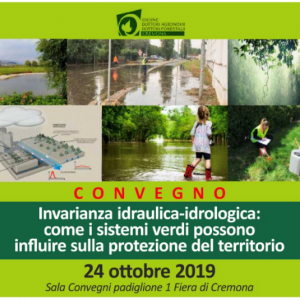Every year the chemical industries produce and market hundreds of new molecules, which in some cases can contaminate watercourses and pose a human health problem.
Significantly, “water safety” will be one of the themes at the heart of Watec Italy 2019, the event that from 23 to 26 October will bring to Cremona the finest international research to talk about the circular economy and environmental sustainability.
Take the example of what happened recently in Italy with PFAS, a group of substances (“perfluoroalkyls”) used by industry as waterproofing agents. The case begins in 2013, when a study by CNR found these contaminants in the waters of some rivers in the Veneto.
This is for example the case recently in Italy with Pfas, a group of substances (“perfluoroalkylic”) used by industry as waterproofing agents. The case starts in 2013, when a CNR study reports the presence of these contaminants in the waters of some rivers in the Veneto region.
Subsequent investigations showed that the same PFAS had also contaminated the water in a local aquifer from which drinking water was pumped for an extensive and populous region (120,000 people). An emergency was declared. The source of the pollution was identified (a chemicals company with a landfill near the aquifer), the regional authorities issued new rules on the location of industrial landfills and financed the water supply from areas unaffected by the issue.
Finally, the local water company management is experimenting with special treatment filters and has imposed itself much more restrictive potability standards.
But the PFAS emergency is by means over, because the scientific community does not have an univocal view either on the subject or technologies for purifying contaminated water. Hence, without constant monitoring, as research creates new substances, the problem could well crop up again.
In 2018 the supervisory mechanisms in the Veneto region revealed the presence of a previously unknown chemical contaminant, C6O4, a new-generation Pfas, in the waters of the Po.
The story was repeated and within a few months the substance was identified and studied and the problem was blocked, but certainly not effectively solved. Levels of concern about drinking water remain high, given its impact on the population.
When’s the next emergency? Unfortunately, the regulatory obligations the chemicals industry differ from one country to another. With regard to new molecules often in the literature there is inadequate information on potential risks. In such cases prevention is difficult and this generally means interventions is not very timely.
This is why participating in Watec Italy is the best way to take stock of water resource management and the priorities to be addressed. The appointment? At the Cremona Fiera from 23 to 26 October.
#Watec Italy #inquinanti #pfas # C6O4 #acqua #cremonafiere




